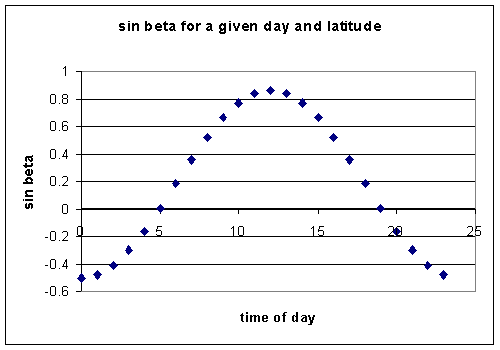
The amount of light that hits any area will vary with the seasons and the declination of the earth relative to the sun. This quantity can be calculated or obtained from tables.
The parameters that are necessary for calculation are:
latitude (given in degrees North)
day of the year (given in day number where Jan 1 = 0)
time of day (given in hours since midnight =0)
The day of the year is used to calculate the declination.
The latitude and the declination are used to calculate the maximum angle of the sun above the horizon.
The time of day is used to calculate the angle above the horizon for at any particular time during the day.
The Exel workbook for these calculations is avaiable here.
The light that hits any surface is directly proportional to the sin of the angle above the horizon - called "sin beta". At about 45 degrees N the sin beta varies from just under 0.376 to 0.929. The day length can be calculated from these relationships as well.

Negative values of sin beta are during the night.
